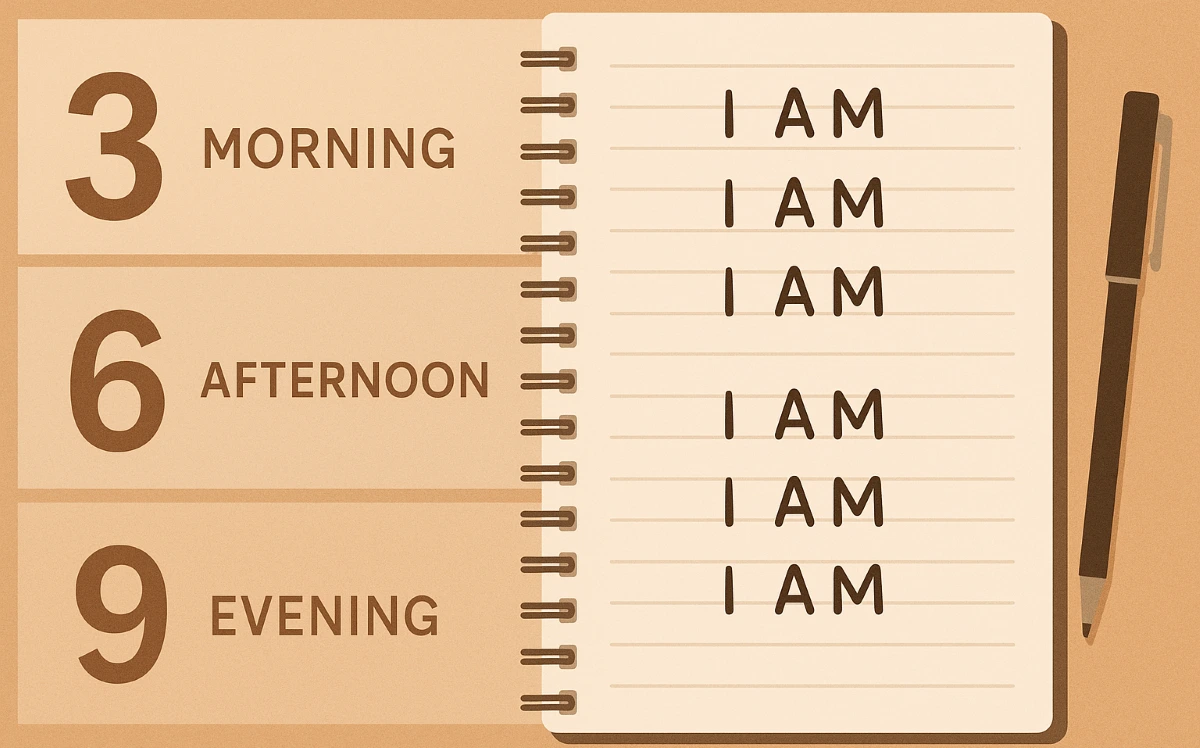Tom had tried and failed to keep a journal more times than he could count.
Every January, he would start the year with good intentions. A brand-new pen, a fresh notebook, and a burst of first-day motivation. He’d write with enthusiasm for three or four days, sometimes a week if he was really determined. But inevitably, the habit would fade. The notebook would slide beneath a pile of post and receipts, forgotten until the next burst of inspiration arrived.
He often told himself he wasn’t a “journaling type.”
He preferred action to reflection, and besides who had time to sit and write when life was already overflowing with things to do?
Then one rainy September evening, something shifted. Scrolling through his phone before bed, Tom came across a quote that stopped him mid-scroll:
“The discipline of writing something down is the first step toward making it happen.” - Lee Iacocca
Something about the simplicity of that sentence caught his attention. *Writing something down.* He’d been carrying a hundred ideas in his head like his plans to get fitter, start a side project, reconnect with old friends, but none of it ever seemed to happen. Maybe, he thought, the act of writing could help him make sense of it all.
He decided to give journaling one final try. But this time, he approached it differently. No grand goals. No perfect pages. No rules. Just a small, daily space to show up for himself.
Step 1: Keep it Short
Tom started with two minutes. That was it. Each night before bed, he’d open his notebook and write one or two sentences like what went well, what didn’t, and what he hoped for tomorrow. Some nights he barely managed a line; other nights he filled half a page. But the point wasn’t perfection. It was simply to *write something*.
He discovered that removing pressure made it easier to keep going. By keeping it short, he avoided the guilt that used to creep in when he missed a day. Two minutes felt doable even on the busiest evenings.
Step 2: Make it Visible
Instead of tucking his notebook into a drawer, Tom left it by the kettle. That small change made all the difference. Each morning, as he waited for his tea to brew, the notebook caught his eye. It became a gentle reminder: *you said you’d show up today.*
Sometimes he’d write a few morning notes while the kettle boiled; other days, he’d just glance at it and smile, knowing he’d return later. Visibility turned intention into action.
Step 3: Use Prompts When You’re Stuck
There were evenings when Tom couldn’t think of anything to say. His day had been ordinary, uneventful. But rather than close the notebook, he started using simple prompts to guide his thoughts:
– *What made me smile today?*
– *What am I grateful for?*
– *What do I need to let go of?*
Those questions unlocked something. He began noticing details he’d usually overlook like the kind cashier at the shop, the smell of rain on his walk home, the relief of finishing a difficult task. Journaling stopped being a record of big events and became a way of noticing the small, good moments woven into everyday life.
Step 4: Pair It with a Habit
Tom tied journaling to his nightly routine. After brushing his teeth and putting his phone on charge, he’d sit for a few quiet minutes to write. Linking it to an existing habit made it automatic just another part of winding down, like turning off the lights or setting the alarm.
Soon, it became something he looked forward to. A small ritual that marked the end of the day. Some nights he wrote about frustrations; others, he simply listed three things that went right. But every night, he wrote.
Step 5: Reflect Once a Week
Every Sunday morning, Tom spent five minutes with his notebook and a coffee. He’d flick through the week’s entries, underline words that stood out, and jot short notes in the margins: *more energy when I exercise*, *avoid overworking Mondays*, *need to say no more often*.
That reflection time became the most powerful part of his routine. It turned random thoughts into insight. He started noticing patterns in his moods, productivity, and happiness, the kind of awareness that only comes when you take time to pause.
The Transformation
After a month, Tom’s short, scrappy notes had evolved into thoughtful pages. After three months, journaling wasn’t a chore, it was an anchor.
He began to notice how much calmer he felt after writing. Problems that once looped endlessly in his mind now found their way onto the page, where they seemed smaller and more manageable. His sleep improved. His thoughts slowed. Even his mornings felt different — clearer, more intentional.
When he finally filled his first notebook, Tom looked back at the very first line he’d written:
*"Just try for two minutes."*
He smiled. That tiny promise to himself had grown into a full-fledged habit and one that required no app, no planner, no special tool. Just pen, paper, and consistency.
The habit hadn’t made his life perfect, but it had given it *shape*.
And that’s the beauty of a daily writing practice: it reminds you that growth doesn’t come in bursts of motivation. It happens in small, steady moments of attention, one page at a time.


